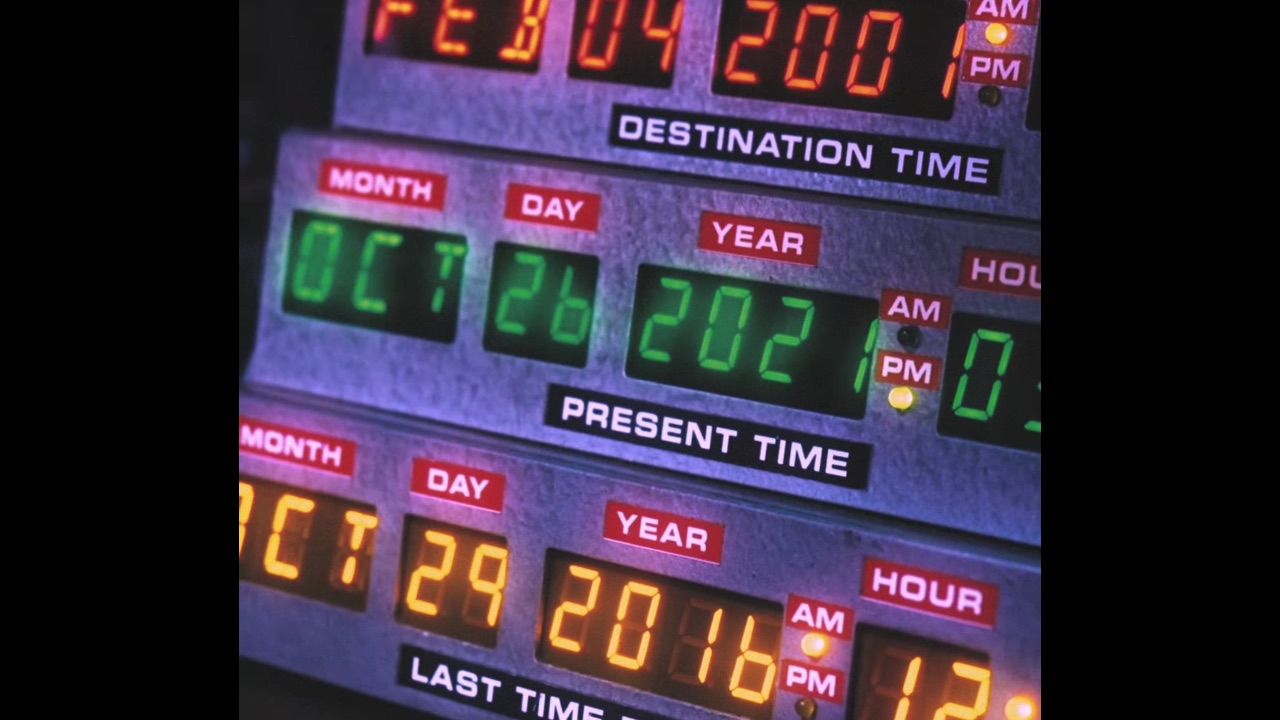
We're taking a deep dive into time-based audio manipulation this month on MusicRadar, covering everything from time-stretching to tape stops and looking at some fantastic examples of producers using these effects to their advantage.
Yesterday, we looked into the history of reversing in audio, an effect that even the least technologically-inclined music fans should be able to recognise and enjoy. With that in mind, today we're showing you how to use CableGuys' TimeShaper plugin (which you can snag for free with this month's issue of Computer Music magazine) to experiment with reverse effects.
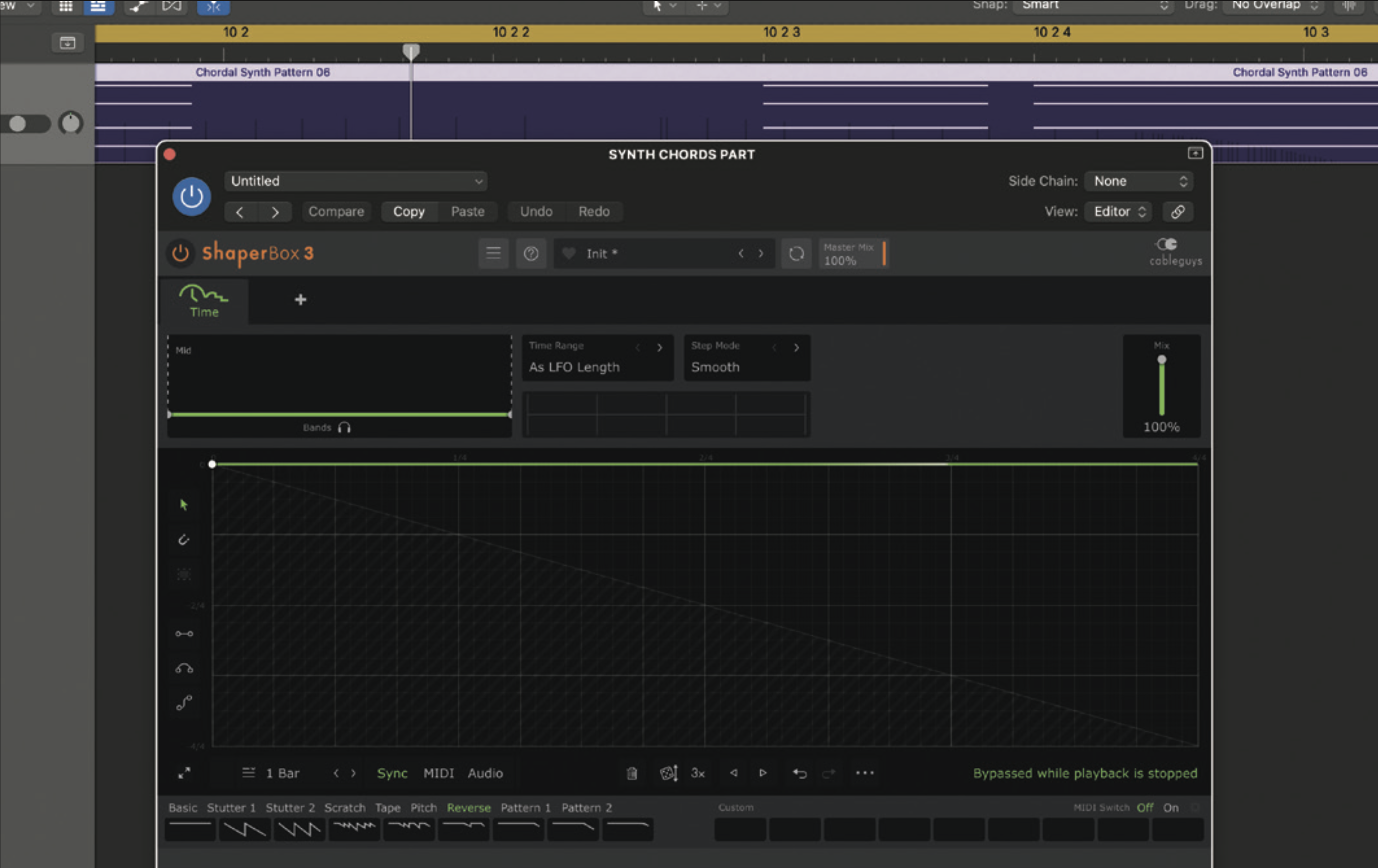
The most obvious way to achieve reverse playback in your DAW is to use a clip reverse option or offline process. This works fine for audio, and is often a good solution. However, it doesn’t work for MIDI instrument tracks or offer the creativity of a real-time plugin, and that’s where TimeShaper 3 can help.
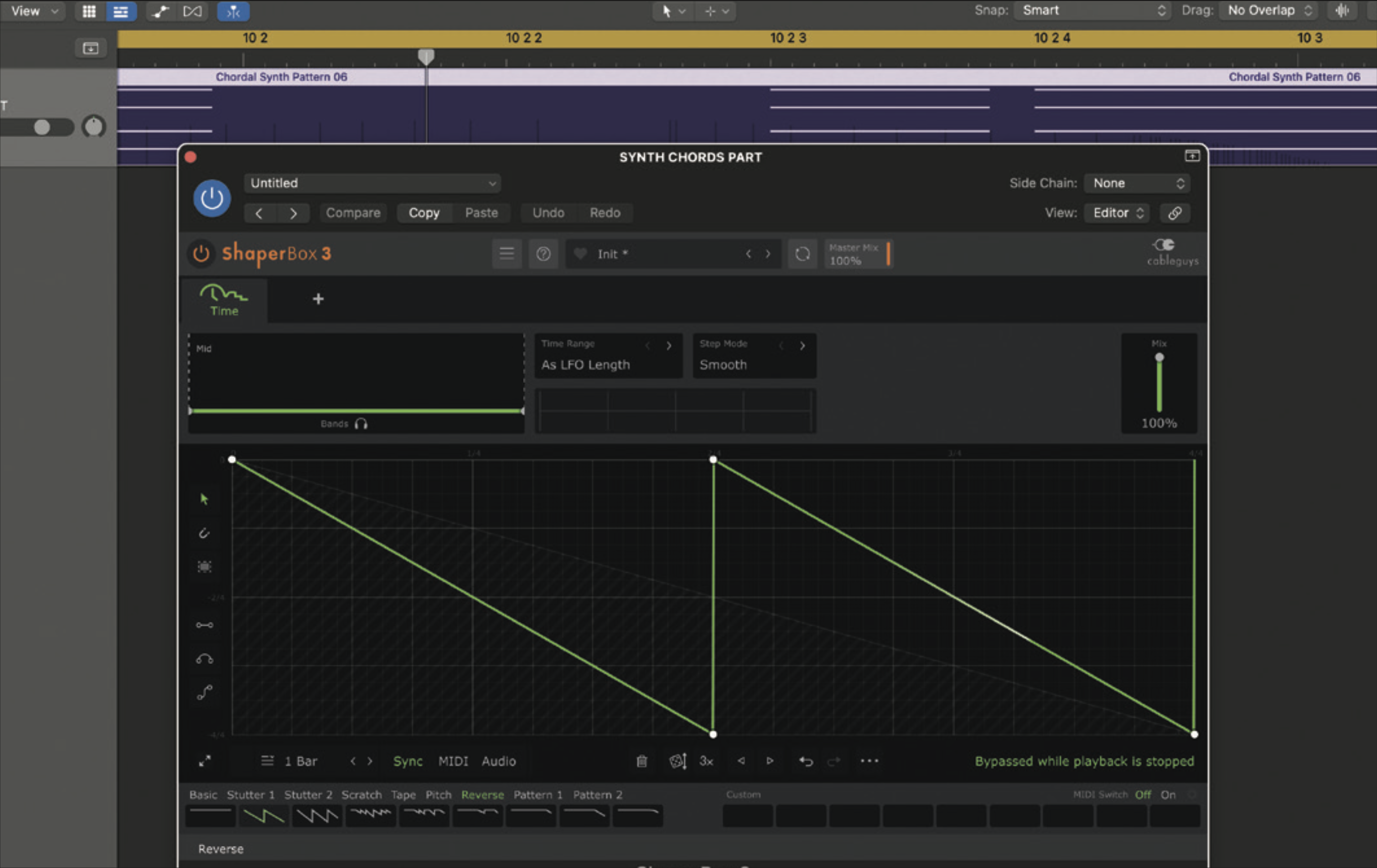
Here we have a MIDI instrument synth part and the choppy nature makes it an ideal candidate for some creative reversing. Let’s start with a simple reverse effect. We’ve loaded an instance of TimeShaper 3, making sure it’s set to one bar in length, and from the Reverse presets we’ve selected the second option: Reverse.
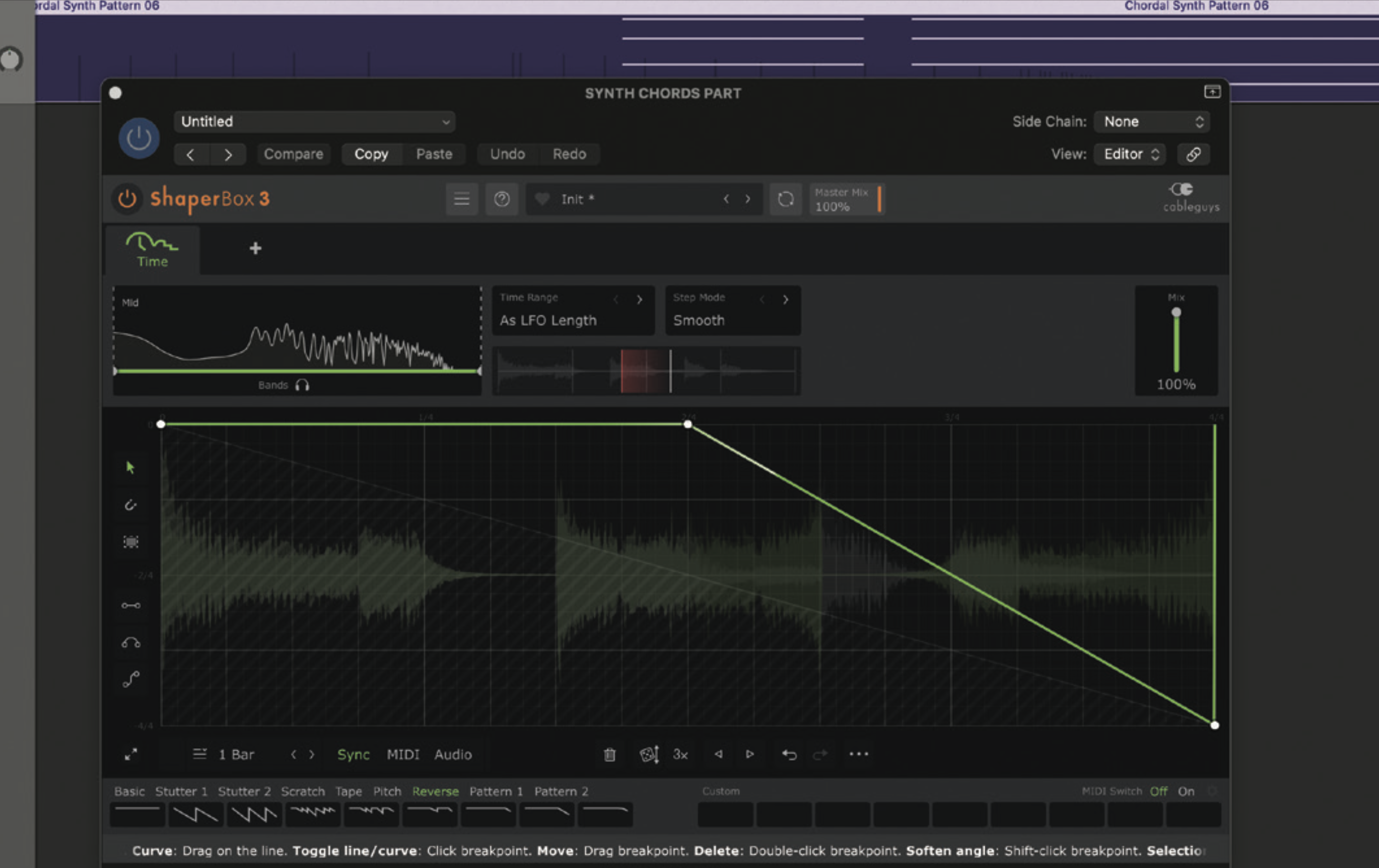
If we now make a simple adjustment to the LFO curve, so that the first half is flat at the top, we’ll get a simple effect. Hit play and you’ll hear that the first half is forwards and the second half backwards. Look at the mini time-offset display above and you should see the red line also indicating this forward-backward behaviour.
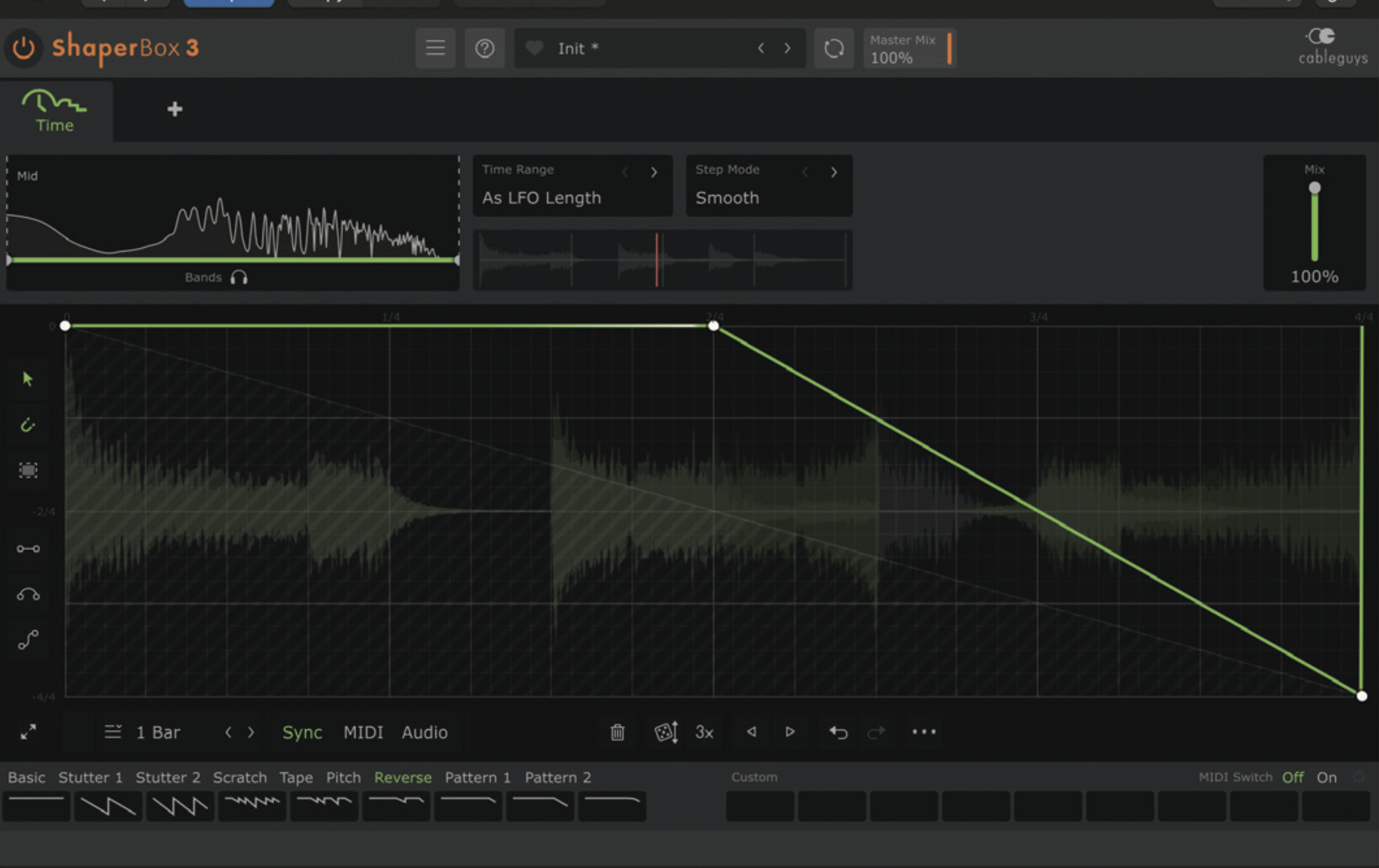
The background grey line is very important in determining how the plugin behaves. Here we see that the slope of the LFO is steeper than the grey line and thus it delivers reverse playback. The LFO also ends on the grey line, which is the bar start-point.
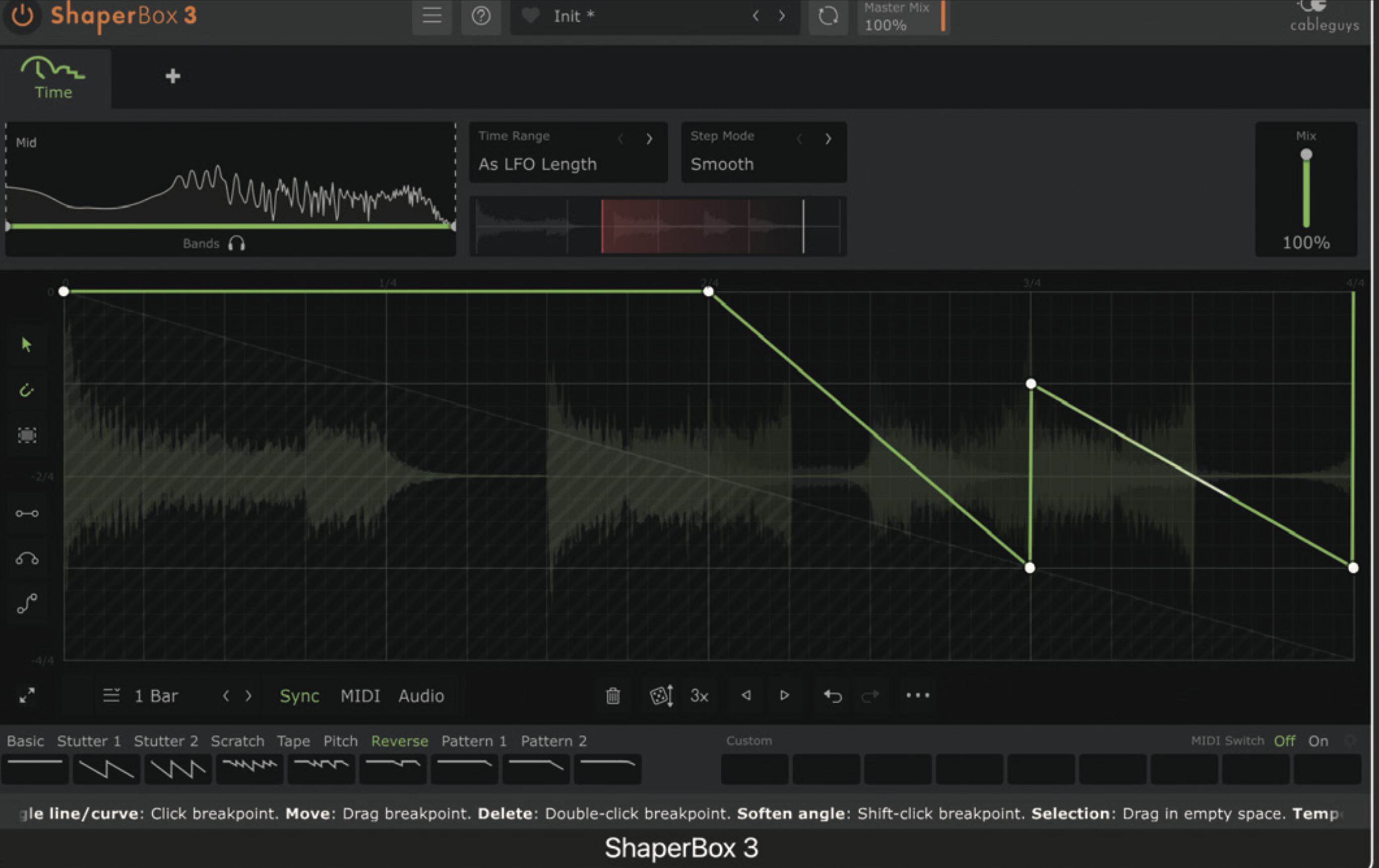
Now adjust the LFO grey line intersection, making it arrive sooner: we’ve snapped this to sit on quarter note 3. This will speed up the reverse audio to reverse two quarter notes of audio in a one quarter-note duration. We’ve added a final reverse section starting halfway through the bar that reverses one quarter-note at regular pitch.
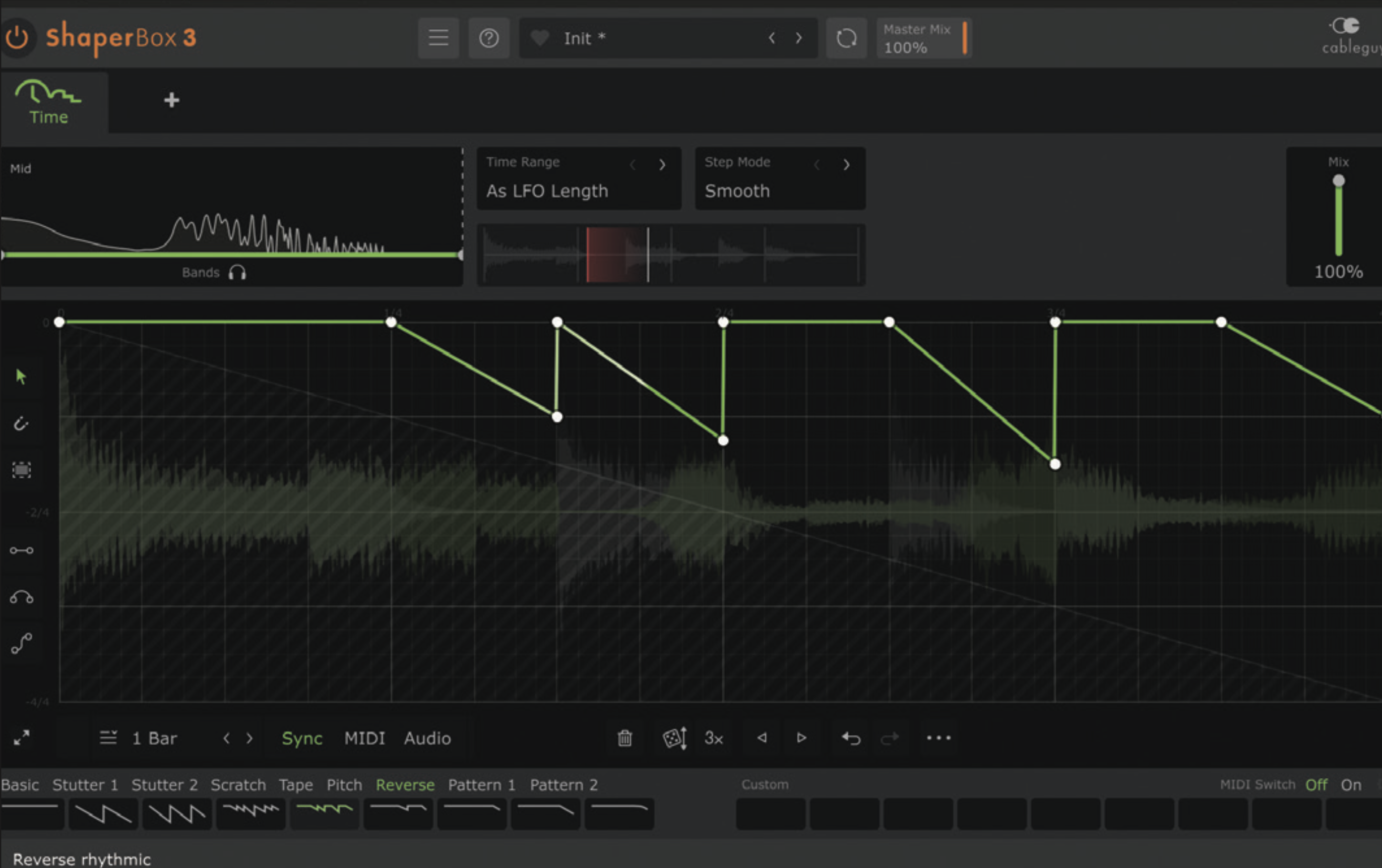
Armed with this knowledge, try one of the more complex reverse presets. We’ve loaded Reverse Rhythmic. You’ll hear that it combines reverse sections with regular forward sections. This is precisely what the LFO tells us, with sped up and regular speed reverse sections indicated by the slopes of the curve.







